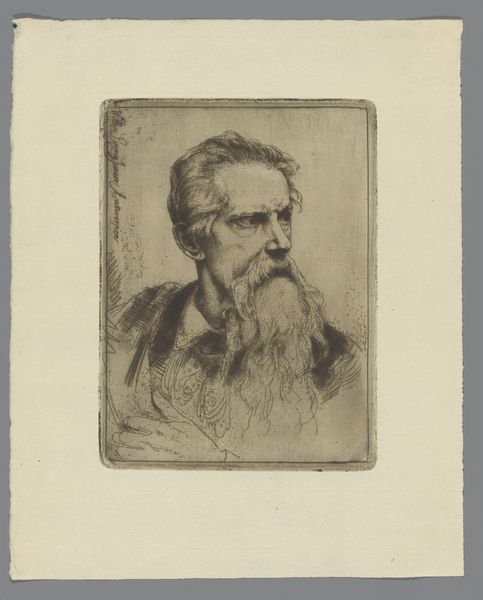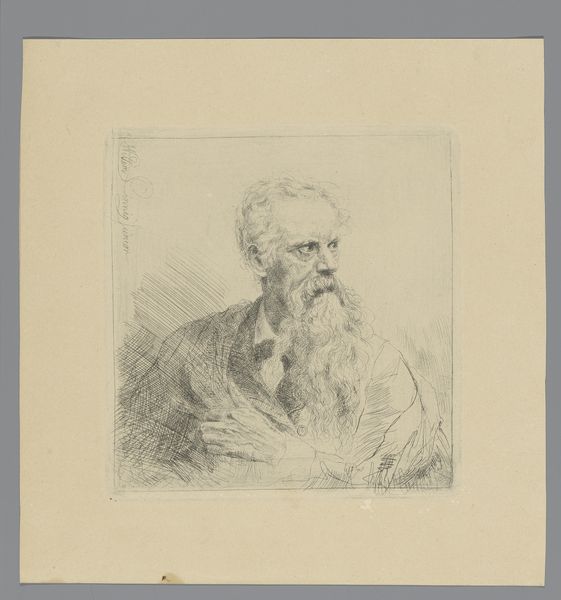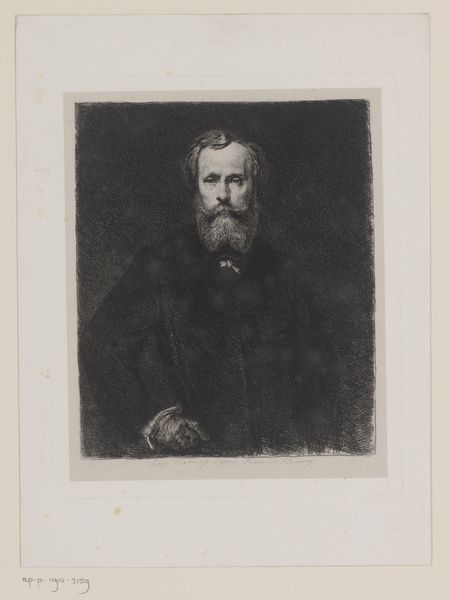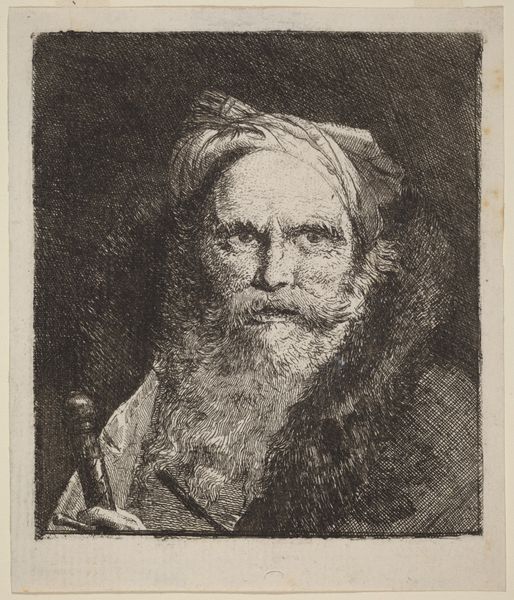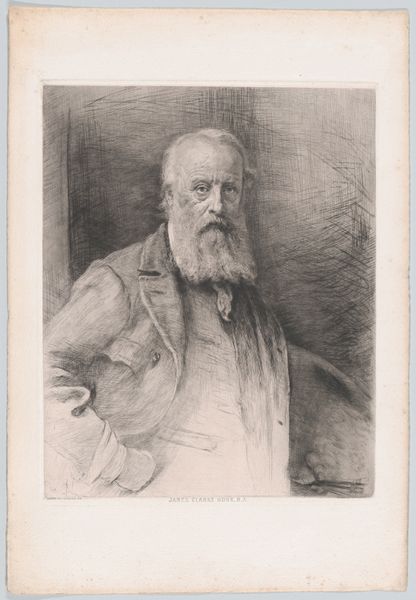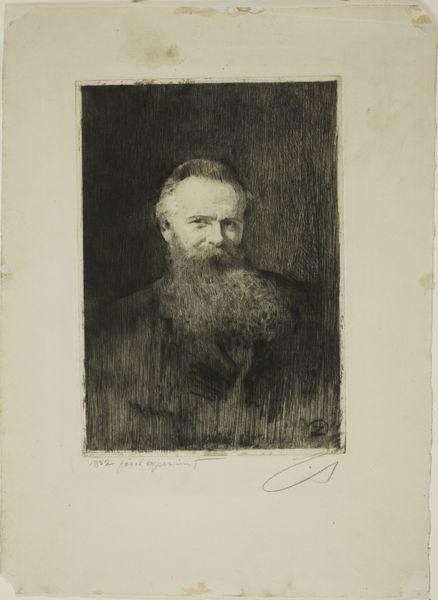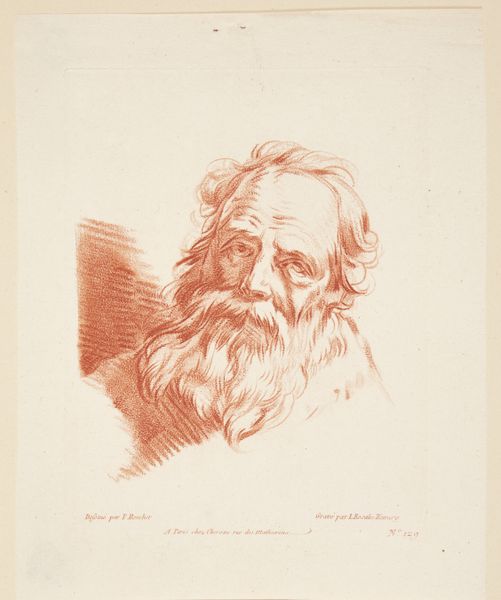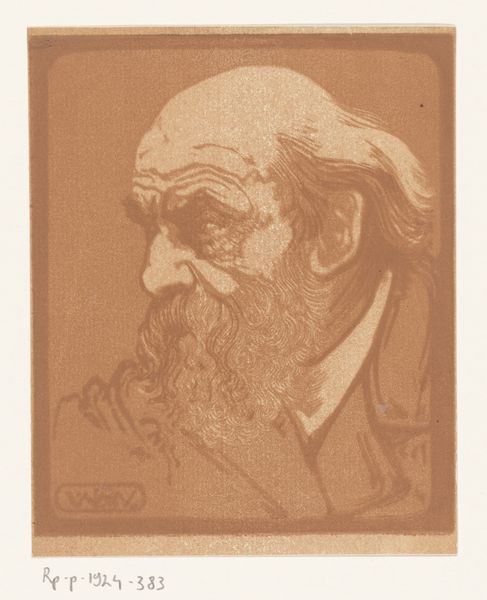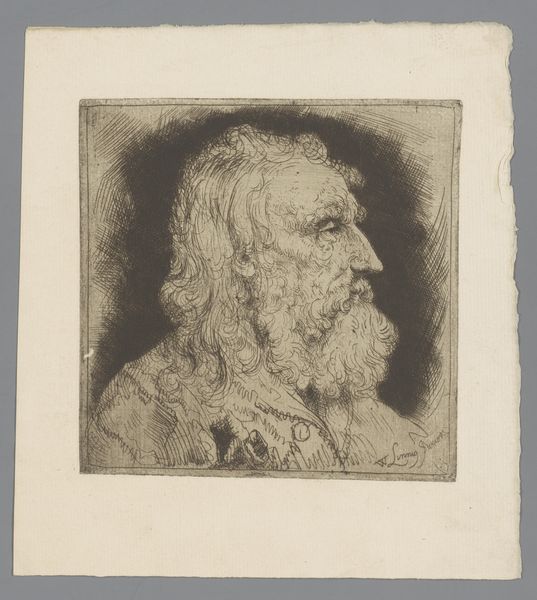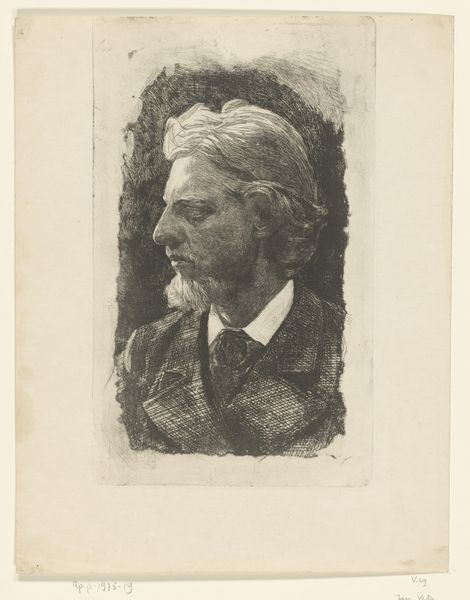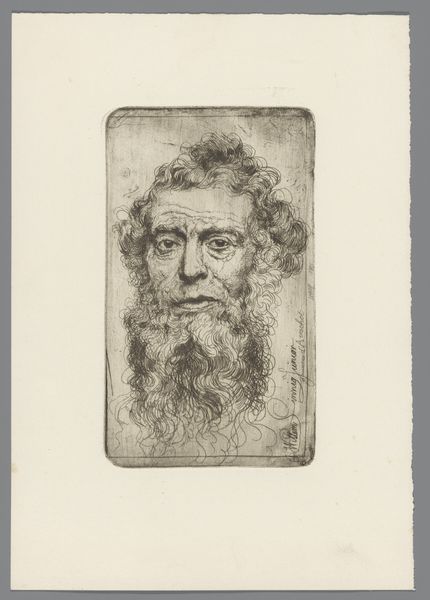
etching
#
portrait
#
etching
#
realism
Dimensions: height 188 mm, width 137 mm
Copyright: Rijks Museum: Open Domain
Editor: Here we have Willem Linnig’s etching of Franz Liszt, likely created between 1852 and 1889. The fine lines really capture the detail in Liszt's beard, but there's a melancholy to his gaze that I find quite striking. What stands out to you? Curator: That melancholy, as you put it, is interesting. In iconographic terms, the beard itself speaks volumes. Throughout history, a long beard often symbolizes wisdom, maturity, even a prophetic quality. Linnig might be connecting Liszt not just to musical mastery, but to something deeper, a kind of spiritual understanding accessible through his art. Editor: So the beard isn't just a stylistic choice, it's contributing to Liszt's overall persona? Curator: Exactly. Think of other figures throughout history depicted with prominent beards - philosophers, religious leaders. The beard is visual shorthand. The way Liszt’s brow is furrowed, that slight downturn of the mouth… These also become signifiers. What emotions or roles were socially expected from great artists? How might Liszt play with that expectation, or subvert it? Editor: That makes me see it completely differently. I was just thinking about technique. Now I’m thinking about constructed identity. Curator: And it's identity presented through the filter of the artist who is etching it! So you see how loaded one seemingly straightforward portrait can be? It's a constant play between historical meaning and individual expression. Editor: That's fascinating. It highlights how symbols change but keep some echo of their earlier meanings. Curator: Indeed. Recognizing the longevity, and mutability, of symbolism is part of the joy of art history.
Comments
No comments
Be the first to comment and join the conversation on the ultimate creative platform.
